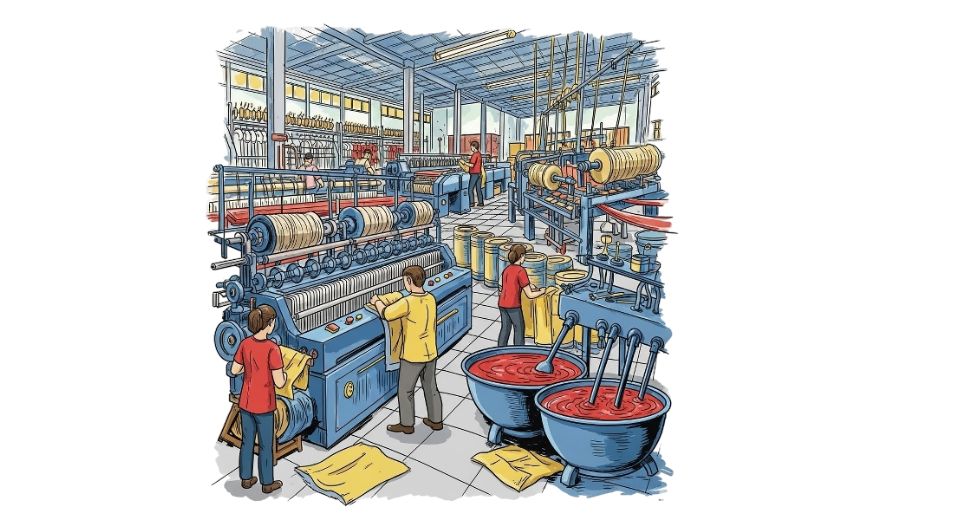
Jul 11, 2025

The report on the Global Bio-based Textiles market published by Metastat Insight puts a spotlight on an area of the textile sector that is experiencing a clear sea change in perception and practice. This is not brought about by superficial trends, but by an examination from the ground up of production methods, procurement practices, and sustainability. Bio-based fabrics, previously a niche factor in textile manufacturing, are slowly entering the wider commercial market due to changes in manufacturing preference and material development. As this area gains traction, attention is now moving from novelty towards application, with an increasing number of companies reconsidering how they approach the choice of raw materials for performance and function.
Global Bio-based Textiles market is estimated to reach $54,158.15 million in 2025 with a CAGR of 8.6% from 2025 to 2032.
Historically dominated by synthetic and material-consuming materials, textile production is progressively turning its attention to bio-based material. These fabrics, produced from renewable biological materials like agricultural residues, plant fibers, and biopolymers, are beginning to provide new options for the development of fabric. Although the path toward incorporating these materials has not been straight, the recent acceleration is pointing more in the direction of a steady path. Bio-based products now find application in everything from streetwear to performance apparel, furniture upholstery, and technical textiles. The discourse surrounding these textiles has transcended aesthetic surface, as more consideration is now being paid to texture, wear, and how they integrate with high-volume manufacturing processes.
More manufacturers are investigating a greater range of raw materials, testing fibers sourced from such things as algae, corn, and even citrus processing waste. This development is not necessarily a quest for alternative materials but a quest to refine the characteristics of fabric for niche application without compromising on required manufacturing specifications. The challenge is in ensuring quality consistency while accepting variability in bio-based inputs. In the process, firms are adjusting production lines and test protocols to accommodate changing specifications without sacrificing performance or design.
In addition to raw material replacement, the emergence of bio-based textiles is impacting machine design and processing technologies. Conventional textile machinery has been forced to conform to the unique behavior of bio-derived fibers, leading to innovations in spinning, weaving, and dyeing technology. What was a secondary modification is quickly becoming a mainstream concern for machinery builders now dealing with demand for systems compatible with alternative feedstocks. This interdependent development of material and machine is gradually redefining the underlying mechanisms of textile production, presenting a new level to operational tactics in this field.
World markets are increasingly proving receptive to bio-based textiles, though the rate of progress widely differs across regions. Certain territories are more apt to embrace these materials at the mass-retail level, while others are cultivating them at the boutique-level of experimentation. Interestingly, it is not only the origin but the story around bio-based textiles that differentiates them. Firms are putting investments into the transparency programs, enabling customers and partners to trace the origin and life cycle of these materials, establishing trust and differentiation in an oversaturated market.
Patterns of distribution are also undergoing transformation. Suppliers and retailers are reconfiguring their logistics models to support the more localized supply patterns commonly found in bio-based production. In contrast to traditional synthetic materials that depend heavily on centralized manufacture, bio-based inputs are typically region-specific. This has steered businesses towards reconfiguring their supply chains so as to prioritize flexibility and regional tailoring. This is not so much a logistical shift as a strategic one, providing new alignment between sourcing and consumer taste at the micro-market level.
Though the industry does face issues in standardization and material uniformity, it also enjoys the increasing knowledge base and increased industry cohesiveness. Collaborations between research organizations, farm cooperatives, and textile companies are more in the foreground now, opening up fresh feedback loops between implementation and innovation. These initiatives are churning out fabrics that not only meet commercial goals but also offer fresh narratives to a buyer generation looking for depth over surface branding.
The steady advancements in this area indicate that bio-based textiles are receiving more and more seriousness, not as environment-friendly substitutes merely, but as serious players in high-demand product segments. Their shift from experimental laboratory products to commercially acceptable textiles indicates something more than material replacement—it indicates a broader cultural and industrial reorientation.
As has been underscored in the recent publication on the Global Bio-based Textiles market by Metastat Insight, this market is discovering new horizons through a convergence of material science, customer demands, and industrial transformation. As companies learn to better make and market such textiles, the way forward looks more about long-term fit rather than short-term trend.
Drop us an email at:
Call us on:
+1 214 613 5758
+91 73850 57479